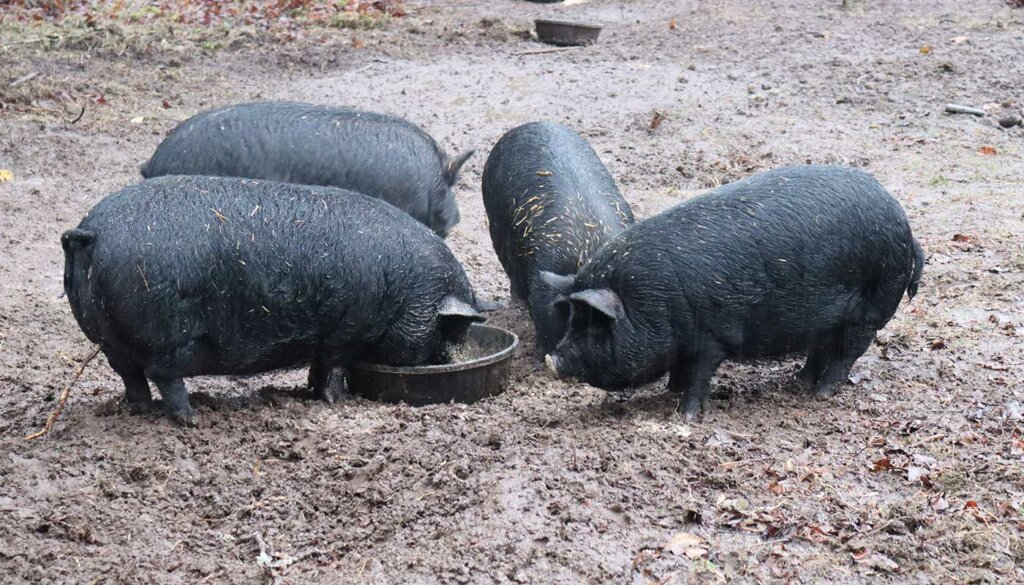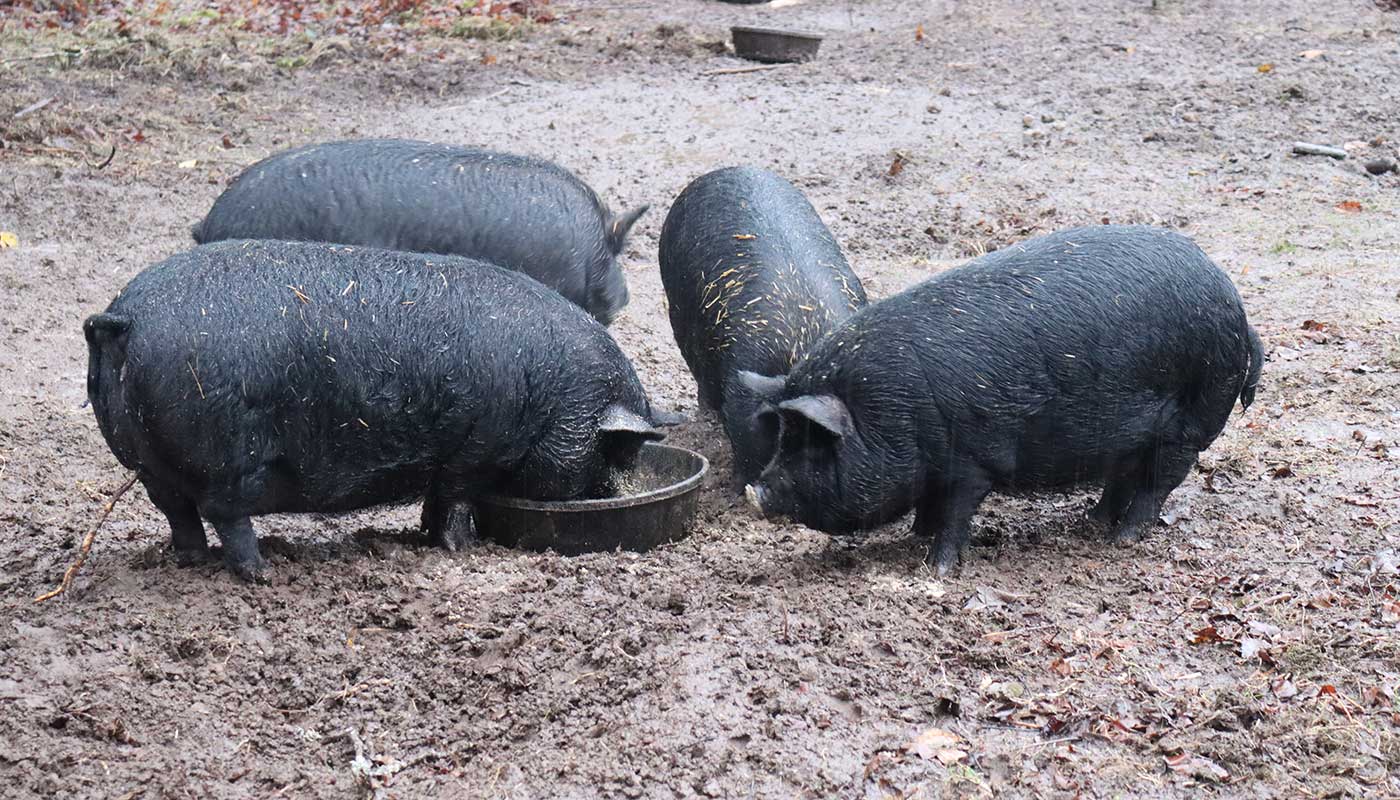Up until a year ago, I didn’t even know about this specific breed of hogs, how they differ from the modern breeds, and how to raise them. But after reading “Saving the Guinea Hogs: The Recovery of an American Homestead Breed” by Cathy Payne, I was so excited to get started.

Going into 2020 we had already decided that we were going to be raising our own hogs again for meat. We love raising hogs, butchering them, and then curing the ham ourselves.
We had taken a year off because our freezers were still well stocked with pork, but with the events surrounding 2020, we knew we wanted to raise, butcher, and preserve our own pork products again this year.
Little did we know, our usual breeder had retired!
We don’t love to purchase animals from auctions because you don’t typically know the full bloodline, the environment they’re coming from, and other unknowns. So we don’t like to bring them onto our own property.
The only breed we were able to find locally were American Guinea Hogs. We contacted the breeder and told them we’d take the piglets. After family members and friends kept asking us if we were raising pigs, we eventually cleaned the breeder out of all their piglets!
After researching this specific breed online I came across a book by Cathy Payne called “Saving the Guinea Hogs: The Recovery of an American Homestead Breed”.
On today’s podcast, I have the privilege of talking with award winning author, Cathy to hear all about this breed.
I hope you enjoy this episode as much as I did.
Table of Contents[Hide][Show]
In this episode:
- Where the American Guinea Hogs got their start.
- How Cathy got started on her own homestead with this specific breed.
- How the American Guinea Hog is different than other, more common breeds.
- How big American Guinea Hogs get, how much they eat, how long they take to grow, etc.
- What we feed our hogs and how we stretch/supplement our feed.
- What the meat of this breed tastes like.
- How to render the lard to use in cooking and baking.
- A trick on doubling the bacon production!
- Whether or not this breed will graze or eat hay and/or alfalfa.
- Health benefits for grass-fed vs. grain-fed animals.
- How this breed does in colder temperatures.
- How to help this heritage breed continue on in the future.
Links from this episode:
- Get Cathy’s book, “Saving the Guinea Hogs: The Recovery of an American Homestead Breed” (Use code: PT25 for 25% off a soft-cover copy of her book and free shipping! Offer good through 01/10/2021)
- Visit Cathy’s website.
- Visit Cathy on Instagram.
- Visit Cathy on Facebook.
- How to Buy a Homestead – Another Pioneering Today Podcast with Cathy.
[fusebox_transcript]
More Articles You May Enjoy
- Salt Cured Ham: Old-Fashioned Preserving
- How to Raise Pigs: 12 Tips to Raising Pigs for Meat
- American Guinea Hogs – Were They Really Worth It?
- Raising backyard egg-laying chickens
- Raising backyard meat birds
- How to raise a dairy cow
- Raising meat rabbits
- Raising sheep (for fiber)
- A guide for raising goats
- Planning your Livestock for a Year’s Worth of Meat per Person
- Stocking Up on Animal Feed (+ How Much to Feed Animals)



